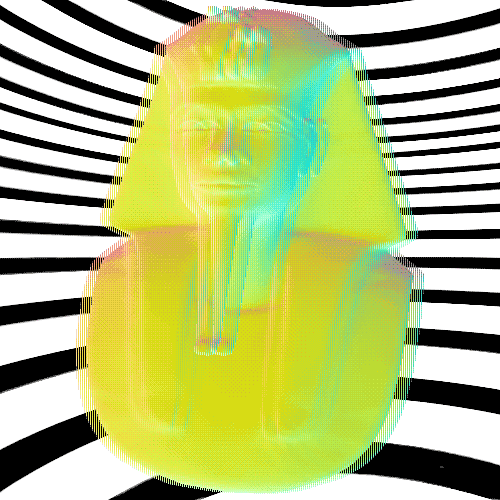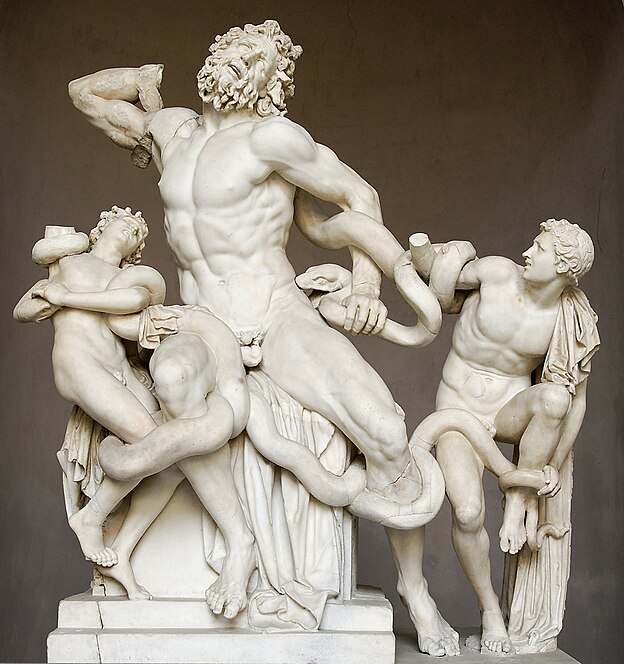
While strolling through the Getty Villa in Malibu—a museum dedicated to the study the cultures of ancient Greece, Rome and Etruria—Adam Pash discovered something curious: Evidence that even the Romans couldn't resist Facebook.Look at it! It definitely proves the Romans had computers! I like this post because it illustrates exactly the thought process behind all those crappy websites about ancient astronauts: if I get stoned and stare at some archaeological stuff for a while, I start to see aliens!
Either that, or he discovered evidence that we can't help but imagine familiar technologies in the most ancient of art pieces. [Adam Pash]
Classic case: K'inich Janaab' Pakal, the Maya 'Astronaut'. Ruler of Palenque in the Late Classic period. His tomb lid looks like this:

Look, he's an astronaut! In a spaceship! You don't see it? Obviously you've been brainwashed by the archaeologists, who are trying to keep the truth from us. Check out this helpful video for an explanation.
(from Palaeoanimation, a very trippy site)
The Pakal tomb was made famous by Erich von Däniken, a cheerful lunatic whose 'Chariots of the Gods?' is an excellent guide on how to see whatever you want to see in the archaeological record. Millions of people take his stuff seriously - Mayanists, new agers who really believe 2012 will be the apocalypse, esoteric Christians, UFO enthusiasts. Not to mention all those misanthropes who think ancient people were too stupid to do anything worthwhile. Just because you sit on the couch and scratch your butt all day doesn't mean that people couldn't have built the pyramids.

(Lolthulhu, an excellent website)
The funny thing about Erich von Däniken is that he got a lot of his ideas from... H.P. Lovecraft. Lovecraft was among the first to come up with the idea of gods as ancient space travelers in his fiction. Jason Colavito in a 2004 number of Skeptic makes a persuasive case that a lot of Von Däniken's ideas came directly from Le Matin des Magiciens ('the morning of the magicians'), whose authors were editors of the French science fiction magazine Planète.
Planète served as an important part of the French second science fiction period, a time when American pulp fiction became extremely popular in France following World War II. French magazines both imitated and reprinted in translation the classic pulp stories of the American 1930s and 40s pulp magazines. Planète's editors held Lovecraft as their prophet, and their reprints of his stories helped to popularize him and the Cthulhu Mythos in the French imagination. Lovecraft's longer fiction was published in French in a series of books.So seeing ancient astronauts on Maya tombs is just as reasonable as seeing a laptop on a Roman stela. It looks that way to me, so it must be true!
Lovecraft's work had also inspired the editors of Planète to write a book, Le Matin des Magiciens (The Morning of the Magicians) a few years earlier, in 1960. The book, by Louis Pawles and Jacques Bergier, first introduced Lovecraft's concept of alien gods as a nonfiction hypothesis. The authors claimed that their study of religions around the world had led them to higher consciousnesses and to new revelations about the lost worlds of the past. Especially relevant to this is Part One: Vanished Civilizations, where they heap up evidence backing up Lovecraft's fictional claims about alien super-civilizations of the past.
Unfortunately now long out of print, the book Morning of the Magicians laid the foundation for all the lost civilizations books to follow, including Chariots of the Gods. As R.T. Gault comments, "It's all here, from the Piri Reis map to pyramidology. The authors are frankly fascinated by the idea that ancient peoples may have been more advanced in some of their technologies than we generally believe."
Von Daniken is known to have exploited this book as his major source. The bibliography of Chariots lists the book in its 1962 German translation: Aufbruch ins dritte Jahrtausend.
On the other hand, what if everything Lovecraft wrote was true?








